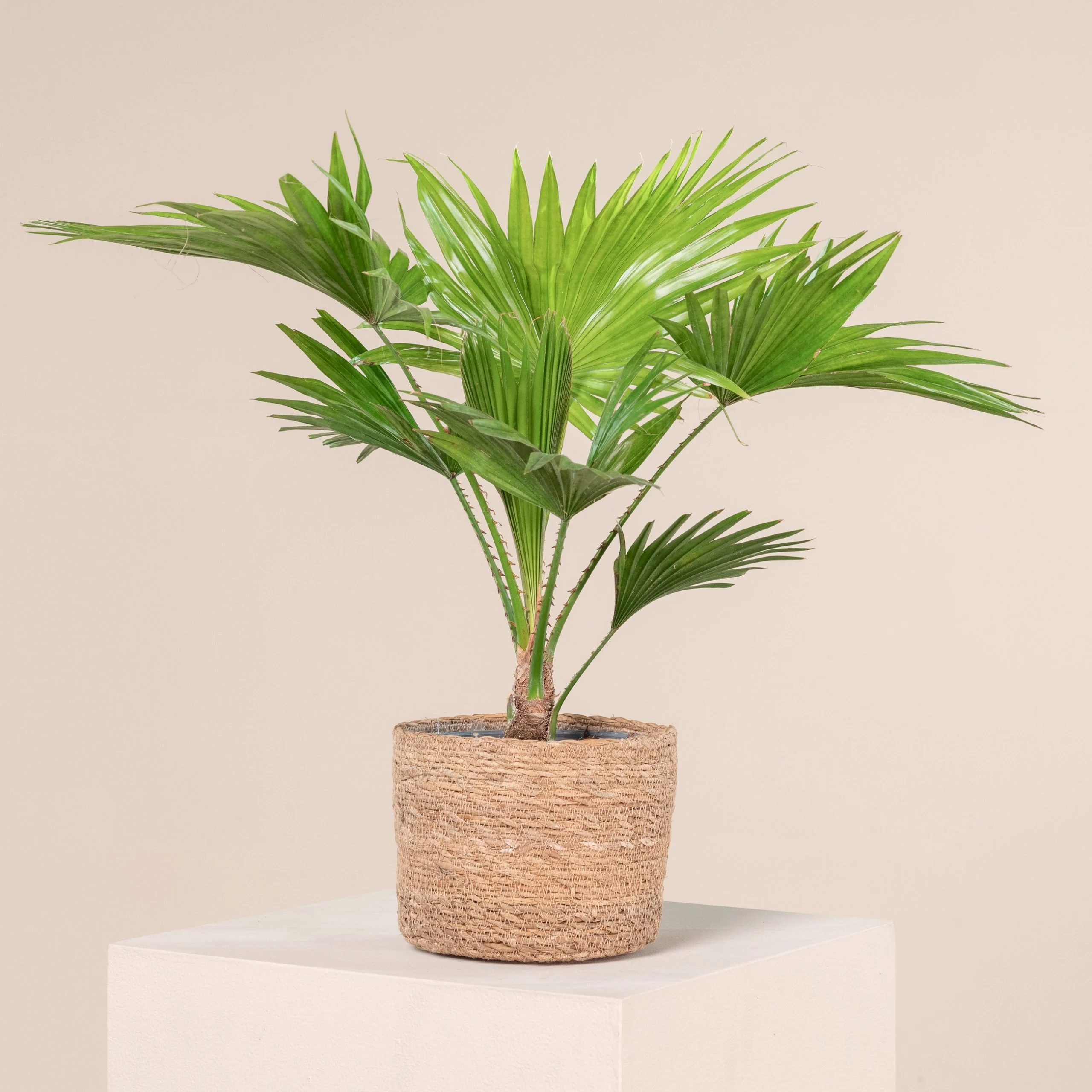Nurturing the Elegance of Footstool Palm: Expert Care, Propagation, and Cultivation Tips
Introduction
The Footstool Palm, scientifically known as Licuala grandis, is a stunning tropical palm that captivates with its large, pleated, fan-shaped leaves. Native to the Solomon Islands, this palm is highly valued for its ornamental beauty and is often used in landscaping and as an indoor statement plant. Its unique foliage and relatively compact growth make it an excellent choice for adding a touch of tropical elegance to any space. This guide provides detailed insights into the care, propagation, and cultivation of the Footstool Palm, offering valuable information for both novice and experienced gardeners.
Quick Facts
| Fact | Details |
|---|---|
| Scientific Name | Licuala grandis |
| Common Names | Footstool Palm, Ruffled Fan Palm |
| Native Regions | Solomon Islands |
| Optimal Humidity | 60-80% |
| Optimal Temperature | 70-85°F (21-29°C) |
| Soil Type | Well-draining, rich in organic matter |
| Watering Needs | Moderate, keep soil consistently moist but not waterlogged |

Physical Characteristics
The Footstool Palm is characterized by its distinctive, circular, pleated leaves that can reach up to 3 feet in diameter. These large, fan-shaped leaves are deeply divided and have a glossy green appearance, adding to the plant’s striking visual appeal. The palm typically grows to about 6-8 feet indoors, making it a manageable size for indoor settings while still providing a lush, tropical ambiance.
Nutrition, Foods to Avoid
Footstool Palms benefit from regular feeding during the growing season (spring and summer). Use a balanced, slow-release fertilizer formulated for palms to support healthy growth. Avoid over-fertilizing, as this can lead to nutrient imbalances and potential damage to the roots. It’s also important to avoid using fertilizers with high salt content, as palms are sensitive to salt buildup in the soil.
Health and Diseases
Footstool Palms are generally hardy but can be susceptible to pests such as spider mites, mealybugs, and scale insects. Regularly inspecting the plant and using insecticidal soap or neem oil can help manage these pests. Overwatering or poor drainage can lead to root rot, so it is crucial to ensure the soil is well-draining and that the plant is not left in standing water. Brown leaf tips can indicate underwatering or low humidity, while yellowing leaves may signal overwatering or nutrient deficiencies.
Propagation Methods
Propagation of Footstool Palms is typically done through seeds:
- Seed Propagation: Fresh seeds should be soaked in warm water for 24-48 hours before planting in a well-draining soil mix. Keep the soil consistently moist and provide warm temperatures to encourage germination, which can take several months.
Pricing Information
| Type | Average Price |
|---|---|
| Small potted plant | $30 – $50 |
| Medium potted plant | $50 – $100 |
| Large potted plant | $100 – $200+ |
Factors Affecting Price
- Plant Size and Age: Larger, more mature plants typically command higher prices.
- Health and Condition: Plants in optimal health with vibrant leaves are more valuable.
- Pot and Presentation: Plants presented in decorative pots or arrangements can be more expensive.
Price in Different Regions
| Region | Average Price |
|---|---|
| USA | $50 |
| Europe | €45 |
| Asia | ¥5000 |
FAQs
Q: How often should I water my Footstool Palm?
A: Water when the top inch of soil feels dry, typically every 1-2 weeks. Ensure the soil is well-draining to prevent root rot.
Q: Can Footstool Palms be grown indoors?
A: Yes, Footstool Palms can thrive indoors with bright, indirect light and high humidity.
Q: How can I increase humidity for my Footstool Palm?
A: Increase humidity by placing a humidifier nearby, misting the leaves regularly, or using a pebble tray with water.
Related Plants
Other tropical palms like the Areca Palm (Dypsis lutescens) and the Kentia Palm (Howea forsteriana) share similar care requirements and can be grown alongside the Footstool Palm.
References
Categories
Tropical Plants, Indoor Gardening, Ornamental Plants, Palms, Low-Maintenance Plants
This comprehensive guide provides all the essential information needed to cultivate and care for Footstool Palms successfully. Whether for personal enjoyment or as part of a larger collection, this elegant and distinctive palm offers a unique and rewarding gardening experience.
Views: 5







